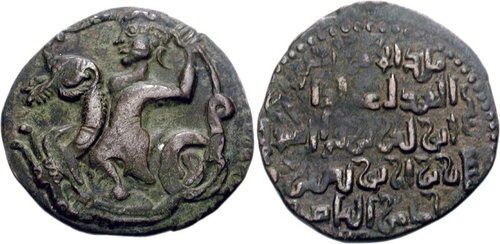Book Review by: Wayne G. Sayles ………..
Collectors and students of ancient coinage can hardly escape visual and epigraphical connections to mythology and astrology that constantly delight the eye and challenge the mind. Aside from political propaganda and the occasional appeal to social graces, no other subject appears so consistently on coins of antiquity.
 One might wonder why that is, since the concepts that these numismatic images represent are often obscure to us even in an age of universal education and mass communication. Could the man or woman on the street in antiquity have understood those often subliminal messages? We have to wonder. But, endure they did and we see in daily life a stunning panorama of inherited ancient images that are as ingrained in us as we envision these images must have been for the bulk of our ancestors. It is only in the thoughtful interpretation of those images that we begin to see the direct correlation between cosmological order and humanity’s long journey through time.
One might wonder why that is, since the concepts that these numismatic images represent are often obscure to us even in an age of universal education and mass communication. Could the man or woman on the street in antiquity have understood those often subliminal messages? We have to wonder. But, endure they did and we see in daily life a stunning panorama of inherited ancient images that are as ingrained in us as we envision these images must have been for the bulk of our ancestors. It is only in the thoughtful interpretation of those images that we begin to see the direct correlation between cosmological order and humanity’s long journey through time.
When the Dragon Wore the Crown, by professional astrologer Don Cerow, presents an intriguing view of astrological subjects within a broad context of time and human awareness. Due to precessional shift, explains Cerow, the stars drift very slowly across the heavens—so slowly that in one human life they move only about one degree. But over several millennia they shift a considerable amount and the reaction of man to specific stars and constellations changes accordingly. For example, Cerow uses a charting of precessional shift to observe the “flight” of the constellation Draco (the dragon). In encyclopedic detail, he describes the correlation of myth and astrology within ancient cultures around the globe.
 In the field of Turkoman figural bronze coins, one of the most impressive types, in my view, is from the realm of 12th-century AD ruler ‘Imad al-Din Abu Bakr. This Artuqid prince of Khartpert, in the historic land between the Tigris and Euphrates rivers, issued an impressive coin bearing the personification of a constellation. The type is generally regarded as a celestial image of Serpentarius bearing Serpens (Draco and Serpens often being confused). Serpens figures prominently in Greek mythology, which may seem odd as the subject for an Islamic coin. Surprisingly, the constellation is a Christian iconographic symbol as well. In the Pelasgian creation myth, Ophion (Serpens) is the first creature created by Eurynome, the goddess of all things. Ophion girdled the universe, and in the heavens this constellation is entwined about the North Star. Ophiuchus (Serpentarius) is the celestial bearer of the Serpent. This 12th-century numismatic image has not only Greek influence, but Babylonian origins in the struggle between Marduk and Tiamat—the struggle of Good with Evil.
In the field of Turkoman figural bronze coins, one of the most impressive types, in my view, is from the realm of 12th-century AD ruler ‘Imad al-Din Abu Bakr. This Artuqid prince of Khartpert, in the historic land between the Tigris and Euphrates rivers, issued an impressive coin bearing the personification of a constellation. The type is generally regarded as a celestial image of Serpentarius bearing Serpens (Draco and Serpens often being confused). Serpens figures prominently in Greek mythology, which may seem odd as the subject for an Islamic coin. Surprisingly, the constellation is a Christian iconographic symbol as well. In the Pelasgian creation myth, Ophion (Serpens) is the first creature created by Eurynome, the goddess of all things. Ophion girdled the universe, and in the heavens this constellation is entwined about the North Star. Ophiuchus (Serpentarius) is the celestial bearer of the Serpent. This 12th-century numismatic image has not only Greek influence, but Babylonian origins in the struggle between Marduk and Tiamat—the struggle of Good with Evil.
Understanding the imagery and cultural significance of astrological subjects is certainly made easier by this book. Although When the Dragon Wore the Crown is not about coins, per se, it will be a delight for anyone interested in the ancient world and ancient myth. Filled with stunning color illustrations, this 200+ page treatise puts astrology into a perspective that few authors have managed to do. It is conveniently organized in chapter forms that are more or less independent and can be read as time or need exists. The book is available at Amazon.com in paperback and Kindle editions and at other booksellers nation wide.
Don Cerow
Ibis Press, 2013
ISBN 978-0-89254-205-5
Paperback, 8 1/2 x 11




